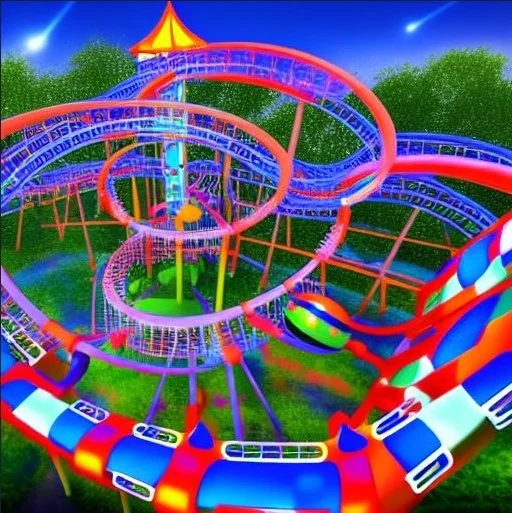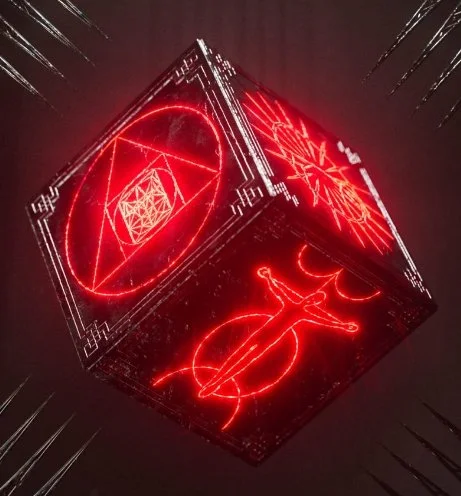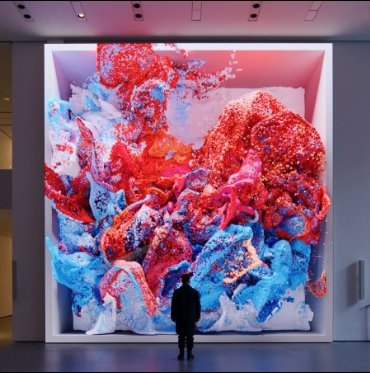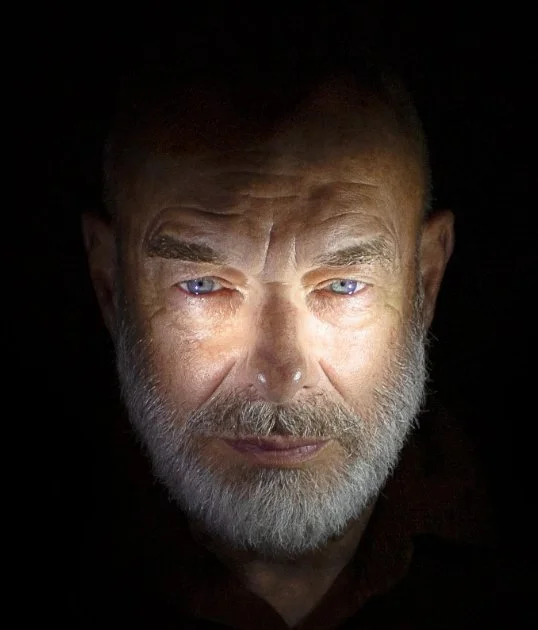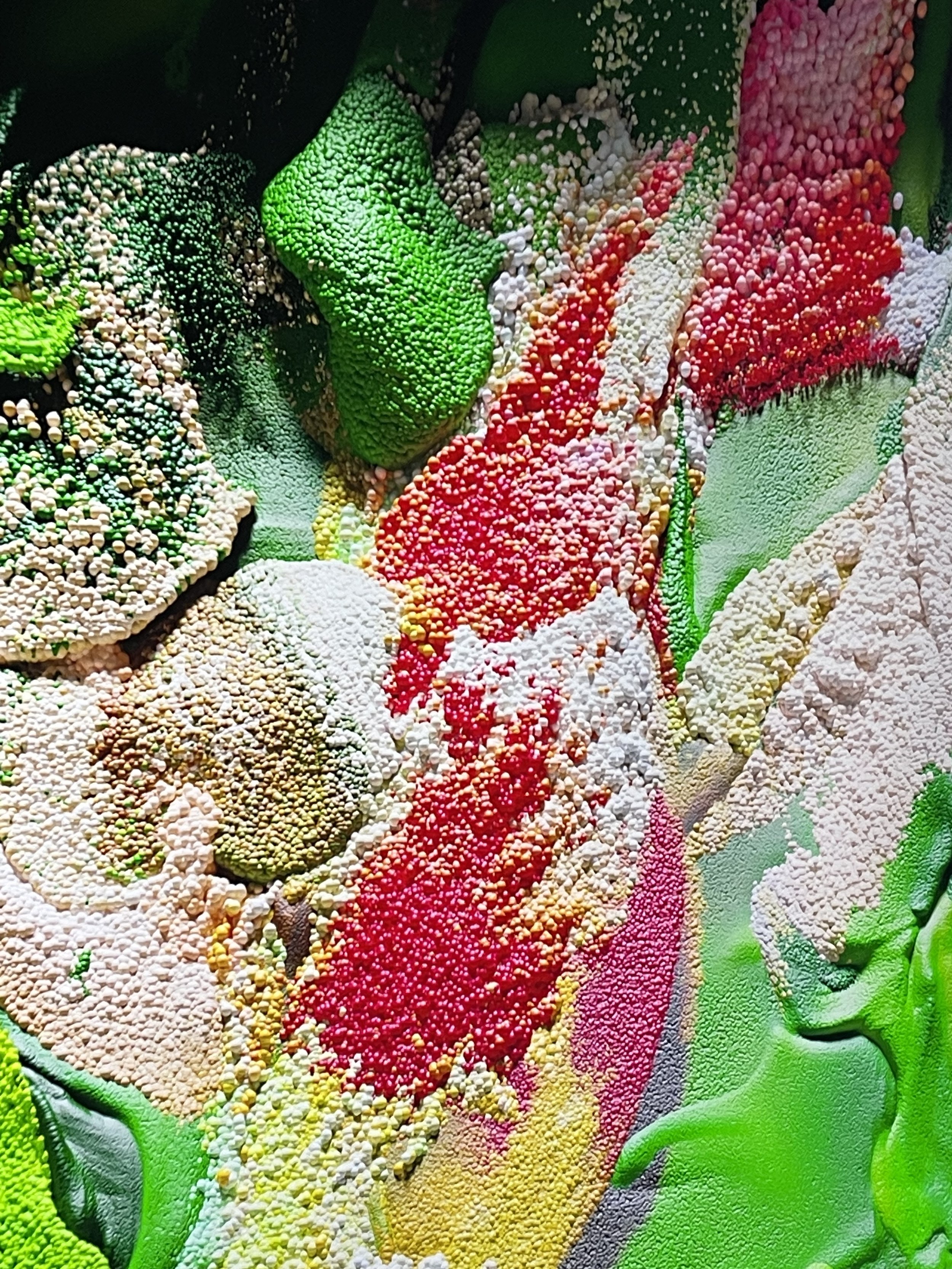
CONTEXTS
Artists
Unit 1
Eleanor Dare’s non-human photography workshop
Eleanor Dare’s non-human photography workshop
At the beginning of November, In Eleanor Dare's workshop, we gained a comprehensive understanding of non-human photography. Non-human photography employs a distinct, arguably more intricate, and diverse perspective when dealing with photography: posthumanist media theory. By this, I refer to a media theory framework that intertwines insights from media, communication, and cultural studies with continental philosophy and cultural theory, while also raising questions about the human subject as the anchor and primary reference point for analysis.
Subsequently, on a technical level, Eleanor Dare shared with us an intriguing feature of Blender software that enables the visualization of naked-eye 3D effects through red-blue glasses. This was immensely helpful to me as I have been using Blender for approximately two years, yet I was unaware of its capability to produce such enchanting effects.
Later on, Eleanor Dare guided us through some exercises in non-human photography, employing techniques to simulate the perspectives of different animals. In a short amount of time, everyone successfully simulated various effects using different technologies.
In our group, we utilized a thermal imaging camera and a smartphone to create a short film simulating the perspective of a snake within an hour. I find this type of rapid creative exercise highly effective because you don't have much time to contemplate deeply. You must implement your effects quickly and logically, and sometimes, this rapid creative process leads to unexpectedly rewarding outcomes.
Our Group work_Snake Vision (Anqi /Jenny /Sanji)
The UAL Psychedelic Society Outdoor Practical Activities
The teacher is explaining about mushrooms
At the end of November, I participated in the UAL Psychedelic Society outdoor practical activities, The theme of this event revolves around mushrooms, and we found ourselves in Waltham Forest, located in the northern part of London. The society's instructor imparted extensive knowledge about various mushroom varieties, including the medicinal Ganoderma lucidum from China. After sampling mushroom tea and biscuits, we ventured into the forest to forage for mushrooms. This proved to be quite intriguing.
My participation in this event is closely tied to a group assignment for our open studio. The theme of our group project revolves around mushroom mythology (details can be found on the Gallery page), prompting all members to join this activity and gather materials for our creation.
After three hours of dedicated exploration, we collected approximately two to three mushroom varieties, some of which were even toxic. The instructor gathered our findings, elucidating on each mushroom and permitting us to take non-toxic ones for further research in our creative endeavors.
I believe that outdoor practice greatly contributed to our mushroom-themed creation, as only by experiencing the natural habitat of mushrooms can we truly comprehend their existence.
Mushroom tea
Collecting mushrooms
Some animals
Collected mushrooms
UVA — Synchronicity, 180 Studios
‘Our Time’
At the end of November, our course organized a visit to the digital media exhibition "UVA - Synchronicity" at 180 Studios, which left a profound and inspiring impression on me. Firstly, the entire exhibition marked the largest-ever showcase by the pioneering art collective UVA, featuring eight large-scale immersive digital art installations. The curation was meticulous, leading us into the entire underground parking space from the second installation onwards, evoking a strong sense of entering a hidden chamber. The underground space, predominantly black, coupled with the audio-visual effects of the digital art installations, created a surreal sense of being lost, yet the exhibition's path was remarkably clear, ensuring that one could navigate through each piece without getting lost.
The installation that left the deepest impression on me was the second piece situated between the ground and underground levels—titled "Our Time." The entire work was positioned on a steep slope leading down to the underground parking. Due to the entire space being black, descending the slope induced an uncontrollable sensation of weightlessness and disorientation. This piece delved into the dimensions of time and space, echoing the sentiments of theoretical physicist Carlo Rovelli: "We dwell in time as fish live in water. Our existence is temporal." Our time is a vast "temporal tool," revealing the elasticity and mysterious nature of time. The installation combined motion, light, and a custom score by the late electronic musician Mira Calix, creating a multisensory environment that manifested the relativity of time—it seemed to accelerate, decelerate, or even come to a standstill. Pendulums swung, each following its rhythm, asynchronous and unhindered by the laws of gravity. Our time, in essence, became both a metronome, a device to keep time, and an improper interference. As light traced paths and echoed, the passage of time almost became tangible.
The entire exhibition provided me with significant inspiration. I realized that the presentation of artwork can be multidimensional and multisensory. Utilizing an underground parking space as an exhibition venue for digital art is also a commendable choice, offering a vastly different experience from viewing exhibits in traditional art galleries. It prompted me to reconsider the selection of exhibition spaces, suggesting that different spaces might yield more impactful results than traditional art galleries.
‘Present Shock ll’
‘Musica Universalis’
‘Edge of Chaos’
CULTUS — Zach Blas, arebyte Gallery
‘CULTUS’
In early November, our teacher led us to the arebyte Gallery to view artist Zach Blas's new work, "CULTUS." The piece consists of a spherical installation and imagery, narrating the political unconscious of the tech industry from the perspective of four AI deities. The visual impact is particularly striking.
Zach presents the entire work in the form of an altar, immersing the entire exhibition space in red light, accompanied by videos and music, providing the audience with a mysterious and immersive religious-style exhibition experience. Due to my profound interest in AI generation and my ongoing attempts to use AI in my own creative endeavors, his work deeply resonated with me. I believe his unique interpretation and satire of AI and the entire tech industry, linking them with religion and mysticism, offer a fresh perspective.
Technically, the integration of dynamic capture, facial recognition, and AI technology allows Zach to create deities that are more emotional and resonate with the audience. I find these details in Zach's work inspiring for my future creations. His artwork also opens my eyes to the broader possibilities of combining AI with digital art.
Exhibition Installation
Exhibition Booklet
‘CULTUS’ Poetry Section
Unit 2
Refik Anadol: Echoes of the Earth: Living Archive, Serpentine Galleries
Refik Anadol’s work
In February, during our collaborative photography course, we visited the Serpentine Galleries to view the exhibition "Echoes of the Earth: Living Archive" by renowned AI visual artist Refik Anadol. Anadol, one of the earliest AI artists in the world, left me in awe with the visual impact of his work. Despite the limited AI technology available at the time of some of his creations, he managed to achieve stunning and unique effects, which was truly eye-opening.
The most thought-provoking aspect of Anadol's work was the balance between visual appeal and content in AI art. This is a question that often troubles me in my own digital and visual art creations. My work primarily focuses on visual aesthetics, but as I delve deeper into my graduate studies, I have come to realize that the substance behind the form is the essence of the artwork. While visually appealing pieces can attract attention, it is the depth and core content that give an artwork its true vitality and authenticity. This reflection, prompted by Anadol's work, has been invaluable to my artistic development.
Additionally, as I marveled at the technical brilliance of Anadol's pieces, I pondered the significance of technology in art. Technology is constantly evolving, and the AI techniques from a few years ago are vastly different from today's advancements like ChatGPT-4, Midjourney, and Sora. This led me to question whether the rapid evolution of technology might diminish the value of artists or their works. However, I have come to understand that the core value of an artwork lies in its conceptual depth and its contextual relevance to its time. Even if the technology becomes obsolete, the intrinsic value and historical significance of the artwork remain.
Refik Anadol's exhibition has profoundly influenced my perspective on the interplay between visual aesthetics and content in art, as well as the role of evolving technology. It has reinforced my belief that while stunning visuals can captivate an audience, it is the underlying message and the contextual significance that endow an artwork with lasting impact and meaning. This experience has been a pivotal point in my journey as an artist, guiding me to create works that are not only visually compelling but also rich in content and context.
Exhibition site video
Exhibition site photos
Guest Lecture and workshop/ Huda Almazrou
Guest Lecture and workshop/ Huda Almazrou
In early March, I attended a lecture and workshop by Huda AImazroua, an artist known for integrating AI and religion in her work. I was deeply impressed by how she blends AI with religious themes, drawing heavily from her identity and upbringing, which imparts a unique quality to her creations.
During the lecture, Huda delved into the relationship between creators and AI, categorizing AI models into controllable and uncontrollable types. This analysis was particularly enlightening. At the beginning of the workshop, Huda posed a thought-provoking question: "Does AI have faith?" This question, which I had never considered before, challenged my perspective. Huda firmly believes that AI can develop a sense of belief as it mimics human behavior. While I don't fully agree with her viewpoint, I find it fascinating. It suggests that AI's perceived faith might reflect the beliefs of its creator, emphasizing AI's role as a creative tool.
Huda AImazroua’s work offered me a fresh perspective on AI creativity. The intersection of AI and religion has been widely discussed, yet truly understanding AI's identity and expressing it uniquely is the most crucial lesson I learned from her work.
In the concluding part of Huda’s workshop, she taught us how to organize language for generating keywords and use storyboarding techniques to create an AI film using Runway. This practical session significantly enhanced my approach to incorporating AI in my projects. Here is a demo Video of my attempts inspired by the workshop.
Overall, Huda AImazroua's insights and techniques provided me with new ways to think about and utilize AI in art, particularly in exploring complex themes such as religion and identity. Her unique approach to AI not only broadens the scope of what AI can achieve in art but also challenges us to consider deeper philosophical questions about the nature of belief and creation in the digital age.
Huda Almazrou's work share
The AI film ’RED‘ I generated using Runway
‘ENO’ documentary premiere / Brian Eno, Barbican Centre
"ENO" documentary premiere scene photo
At the end of April 2024, I attended the premiere of Brian Eno's latest documentary, "Eno," at the Barbican Centre. I was both honored and surprised to hear his insights on AI, which greatly inspired and influenced me.
Brian Eno, the 76-year-old British musician and visual artist, has been at the forefront of music, thought, art, and innovation for the past 50 years. His ability to stay current and continuously evolve is truly admirable. The documentary reviewed his music career and his transition from music to visual art, showcasing his talent for balancing self-expression across different art forms. This deeply resonated with me and led me to consider incorporating various media, such as music, performance, and behavioral art, into my digital and computer art projects. This reinforced my desire in Unit 3 to break traditional artistic boundaries and explore new forms to express my ideas.
Eno's habit of continuous creation and his unyielding desire to innovate are particularly inspiring. He mentioned, "I always look for something to do every day, so I ask myself, what kind of creation will I start today, even if it’s just sketching in a notebook? Complexity grown out of simplicity." This approach has motivated me to maintain a consistent creative practice.
During the interview session following the screening, I was intrigued by Eno's focus on AI, underscoring its significance to contemporary creators. He discussed the dual perspectives artists should have regarding AI: the need for more regulated laws and copyrights to make AI more controllable, and the importance of maintaining an open attitude to embrace AI as a tool. His balanced view on AI reinforced my ideas and inspired deeper exploration and critical thinking about AI's role in art. This unexpected insight profoundly impacted my work and creative process.
Overall, the experience of watching "Eno" and hearing Brian Eno's thoughts provided significant inspiration for my projects. It encouraged me to pursue innovative approaches in my art and explore the intersections between various artistic mediums and AI.
Brian Eno interview video
ENO documentary screenshots (©https://www.hustwit.com/eno)
